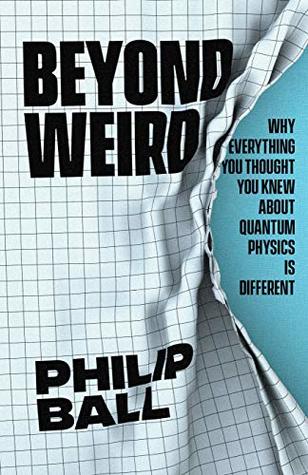More on this book
Community
Kindle Notes & Highlights
by
Philip Ball
Read between
January 25, 2019 - April 8, 2023
can we imagine a set of instantaneous information-sharing rules that allow Alice and Bob to satisfy the rules all the time? Yes, Popescu and Rohrlich showed, we can. We can permit the boxes even more non-local exchange of information than is granted by quantum mechanics, still without violating relativity. These super-quantum boxes have become known as Popescu–Rohrlich (PR) boxes. Their improved performance comes from more efficient sharing of information. In general, communications are very inefficient because they involve exchanging lots of information that doesn’t feature in the final
...more
For certain types of information processing like this, there is a sharp boundary between what can be done in quantum mechanics and what can be done with super-quantum PR boxes. Just make non-locality a tiny bit stronger than quantum-mechanical, and immediately you’re in the super-quantum realm where information exchange is now as efficient as it could possibly be. So PR boxes tell us that quantum non-locality is a measure of the efficiency with which different systems can appear to communicate and share information. And quantum mechanics is revealed as a particular set of rules within which
...more
The ‘one bit per elementary particle’ idea might or might not be true, but it offers a way to think about the issue on which quantum mechanics seems to pronounce very clearly: we can’t know everything. The maximum information we can possibly know about a quantum system is not the complete information that specifies everything about how that system might behave. And the residue is not simply unknown; it is unspecified. We should probably not say that those other properties don’t have fixed values, but rather that, being unmeasured, they are not even properties.
Ontic theories, such as hidden-variables models and the de Broglie–Bohm interpretation, take the view that quantum objects have objective properties – which means in turn that wavefunctions are ‘real’ entities, having a one-to-one correspondence with properties that don’t depend on their being measured. The Copenhagen Interpretation, on the other hand, is epistemic, insisting that it’s not physically meaningful to look for any layer of reality beneath what we can measure. God plays dice only in an epistemic picture. In an ontic view, it only looks that way because we don’t (and perhaps can’t)
...more
It’s not so much understanding or even intuition that quantum mechanics defies, but our sense of logic itself. Sure, it’s hard to intuit what it means for objects to travel along two paths at once, or to have their properties partly situated some place other than the object itself, and so on. But these are just attempts to express in everyday words a state of affairs that defeats the capabilities of language. Our language is designed to reflect the logic we’re familiar with, but that logic won’t work for quantum mechanics.
If that seems like an admission of defeat, says Omnès, it needn’t. The very triumph of quantum mechanics is in having reached the point at which we must leave behind any notion of ‘physical realism’: the assumption that scientific investigation gives us access to and knowledge of physical reality.
might choose to identify this limitation with the ‘intrinsic randomness’ that has been ascribed to the quantum world, although Fuchs prefers to see it as a genuine autonomy: a ‘creativity or novelty in the world’. Wheeler called it, rather cryptically (but not mystically) ‘law without law’. In this view, laws enter into the universe only when (and because) we intervene. They are the probabilistic laws we have discovered to be effective in quantum mechanics, and which can become deterministic ones at scales where averages rule.
Wheeler developed a wonderful metaphor for illustrating this idea of a participatory realism: for showing how answers about ‘reality’ can emerge from the questions we ask in a way that is perfectly consistent, rule-bound and non-random without requiring a pre-existing ‘truth’. You probably know the guessing game of Twenty Questions, in which one player leaves the room and the others agree on a word, or a person, or an object. Then the questioner returns and asks questions to which the only permitted answers are ‘Yes’ and ‘No’. (You see: now you realize that this is a quantum game!) Imagine
...more
This highlight has been truncated due to consecutive passage length restrictions.


